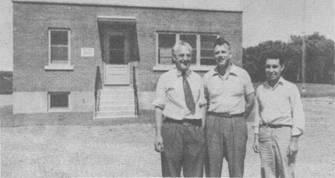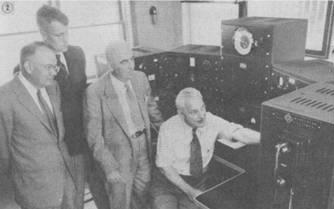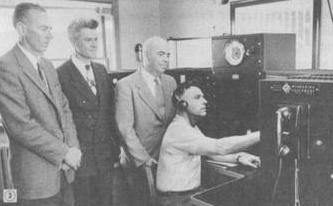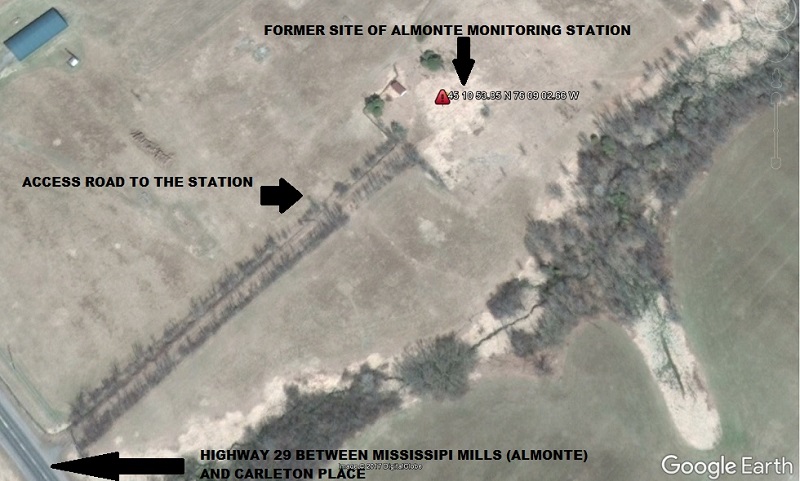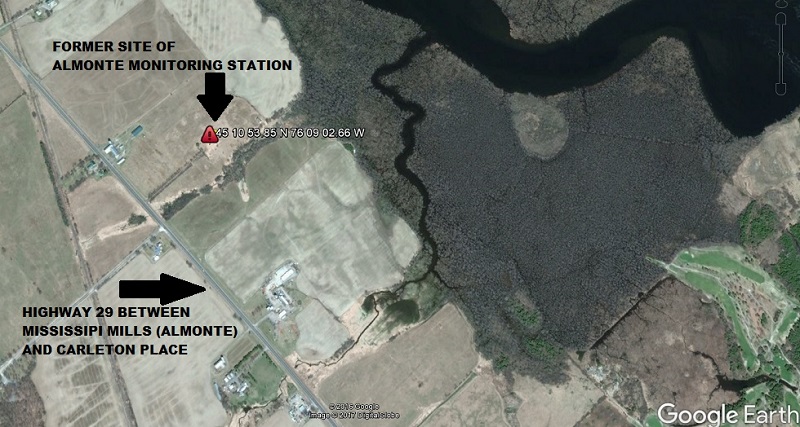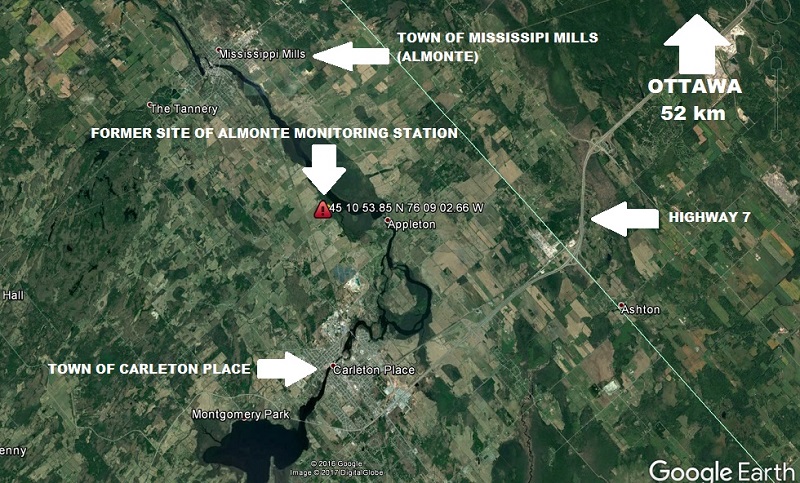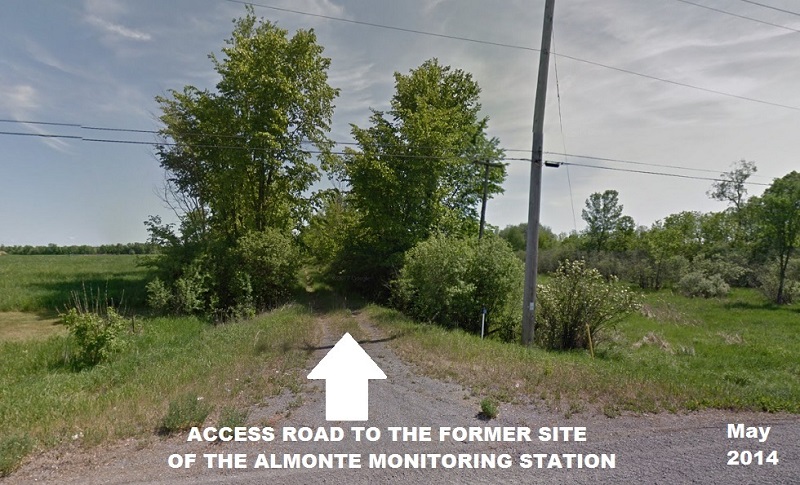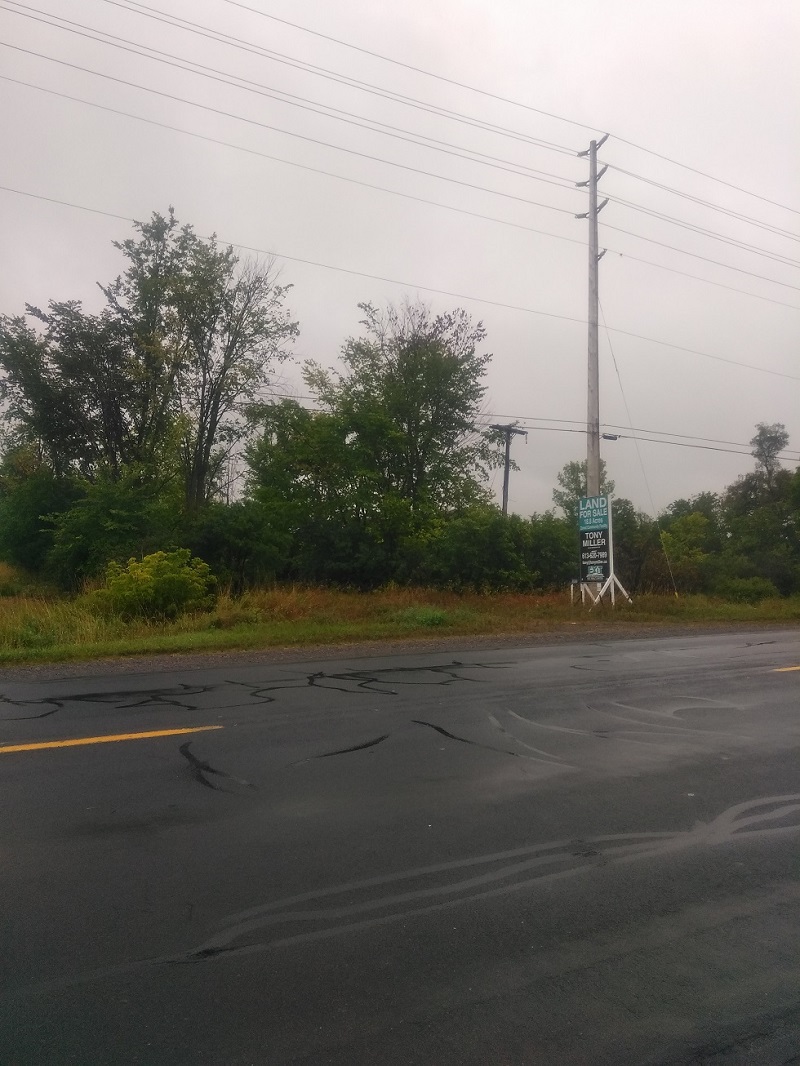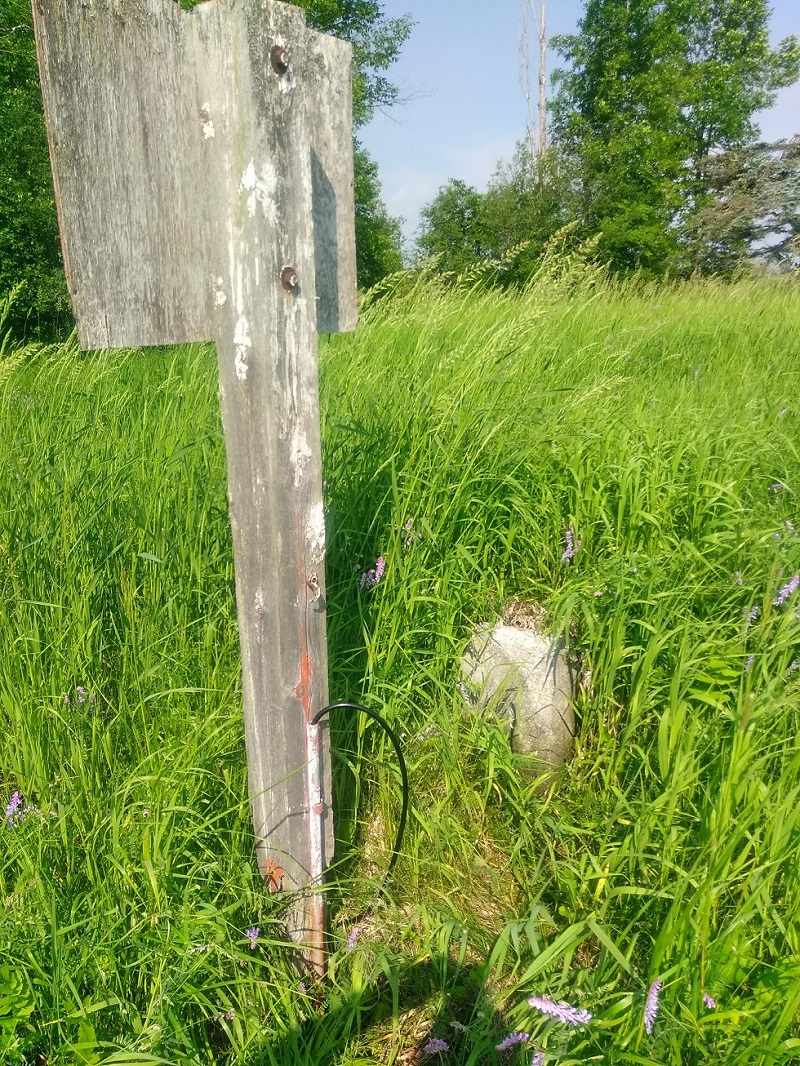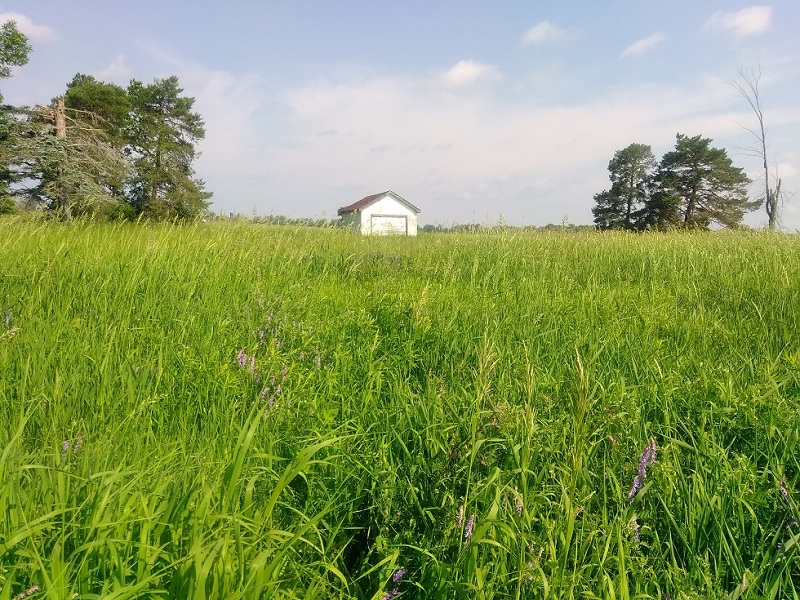|
Canada's first radio monitoring station, situated on the Dominion
Experimental Farm in Ottawa since 1934, has become a casualty of the city's
growth. Housing developments which have sprung up in the postwar years in that
area have introduced so much interference from myriads of electrical appliances
that the station's efficiency was impaired.
As a result, the battery of high precision instruments has been given a new
home 35 miles southwest of Ottawa. Careful studies by the Department's
Telecommunications Division preceded the selection of the site to ensure good
reception and enable the station to carry on its duties which increased
considerably in recent years.
Officer in charge is
Edward Davey who has been with "Telecom" Division for 32
years and supervisor of the Ottawa installation since its inception. Other
members of the staff are G. B. Gard,
A. E. Berry, A. J. Dickie,
E. H. Leaver and
S. Curley.
Purpose of the monitoring station is to ensure observance of both national
and international regulations covering radio and television transmission and,
along with the six sister stations in various parts of Canada, it keeps a
continuous round-the-clock check. That its job is a big one is indicated by the
fact that in Canada alone there are approximately 20,000 radio stations of all
kinds.
The International
Telecommunications Union, of which Canada is a member, lists hundreds of
thousands of them covering the world in a 2400-page volume
''With the air crowded as Department of Transport officer, and T.V.
transmitters welcome the work we do to maintain clear channels and thus help
them carry out their tasks. "
The Almonte Monitoring Centre, to give the official title, constantly is
checking the frequency of station transmissions since the "drift" away from
assigned frequencies results in interfering with other station transmissions.
Only a very small tolerance in frequency "drift" is permitted and when this is
exceeded, the offending station is immediately notified.
Frequency is determined by a tiny quartz crystal which is sensitive to
temperature changes. Although transmitters have built-in temperature controls,
the mechanism sometimes goes wrong and then the station finds itself off its
assigned frequency. The Department of Transport's monitor centre, with its
specially designed measuring equipment, not only detects "drift" but is used to
help the station get back on to its frequency.
It's the rare case where there is a deliberate attempt to use an illegal
frequency; the air is so congested that the users are only too glad to get
assistance in staying to their given frequencies. "Clandestine transmissions are
exceptional in this country."
It is common practise to assign the same frequencies to two
stations--provided they are low-powered and sufficiently far apart so that
mutual interference is kept to a minimum. For instance, giving the same
frequency to a station in the Maritimes and one on the West Coast is not
unusual.
Radio broadcast stations are only
one of several types of transmitters that are monitored. Aids to air navigation
as well as to shipping come under surveillance as well as radio communications
used by telephone and telegraph companies, police, taxicabs, forestry services,
amateur operators, construction companies, etc.
Besides checking on frequencies, the monitor station ensures that procedural
regulations are carried out, identification properly made, profanity kept off
the air, and the station is actually used for the purpose for which it was
licensed. (Program monitoring of radio and television broadcasting stations is
not carried out by the Transport Department but is a function of the CBC.)
Canadian industrialization in recent years has greatly increased the problem of
allocating frequencies. "Even the cement mixers on their way to the job are in
touch with their headquarters by radio," was one example quoted of the way
radio has become so closely integrated with daily commerce.
The "Telecom's" monitor centre must, of necessity, employ the most accurate
type of radio equipment that is made today. For instance, its own high precision
quartz crystals are as fine as one part in ten million. And the answer to the
question '' Who checks the checker?" is quickly at hand. Six times daily, the
Almonte station compares its own frequency against several standards, including
Canada's national standard of frequency transmitted from the Dominion
Observatory by radio station CHU on the Merivale Road.
Mr.
Davey and his staff of five technicians work closely with the other
departmental monitor centres which are situated in Vancouver, Wetaskiwin,
Winnipeg, Strathburn (Ont.), Quebec City and Halifax. The Almonte station
concerns itself mainly with transmission emanating from Sault Ste. Marie to the
west, James Bay on the north, Three Rivers to the east and the Canadian border
to the south.
|







